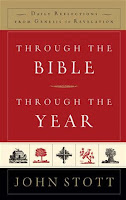After a string of "it was good" and one "very good" God mentions something that is "not good." Man is alone. OF all the animals which he has named, not one is capable of entering into communion with him. Man in the "image of God" is made for communion, for deep abiding friendship and companionship. So the Lord God decides to make a companion, a friend, a soul-mate for Adam (which literally means "earthling").
In this creative act, like the creation of man in chapter one, the Lord God does not merely "speak" woman into existence but rather "forms", "shapes," and "constructs" her out of the very side and substance of the man. The terms used for this procedure have architectural overtones. So they will find shelter in one another.
The first recorded words of the man are spoken after the creation of woman, and they are in verse, a naming poem in which each of the two lines begins with the feminine indicative pronoun "this one" and is also the last Hebrew word of the poem, forming a tight bookend structure:
This one at last, is bone of my bones and flesh of my flesh
This one shall be called woman for from man was this one taken.
Man speaks when he has someone who can answer. Language's original purpose was to serve this communion of persons.
Pope John Paul II has written masterfully on this passage. He reminds us that before "original sin" (narrated in Genesis three) there were three other and even more "original" experiences:
1) Original solitude - humans are unique "image-bearers" and stand apart from the rest of creation in their capacity for self-consciousness and communion with God
2) Original unity - human relatedness and communion is inscribed in the body as male and female. This is portrayed in Genesis 2 through the story of Adam's Sleep, Adam's Rib, and Adam's Song.
3) Original nakedness - is original solitude and unity as they appear in the body, making visible the person through the body. The body is the sacrament of the person, the transparent connection between the body and love.
One commentator captures these insights this way: "Adam recognizes that Eve shares his human nature, yet it is embodied in a different way. This sexual complementarity of the man and woman - their bodily differences within a common nature - reveals their call to relationship. In fact, their sexual differentiation is what enable them to become a mutual gift of self to one another. Their bodies' natural aptitude for union is the visible reflection of their interior capacity to form a communion of persons." Mary Healy, Men and Women are from Eden, p. 24.
Toward the end of his life and a few years after the death of his beloved wife, Mark Twain wrote his most overtly theological and contemplative work, Eve's Diary. The voice is Eve's, narrating life outside of the garden of Eden. She dies. Then Adam's voice appears, as he puts the finishing touches on his wife's manuscript. He finishes her account of life outside the garden with these words: Wherever she was, there was Eden.
Mark Twain understood Genesis two quite well.

No comments:
Post a Comment